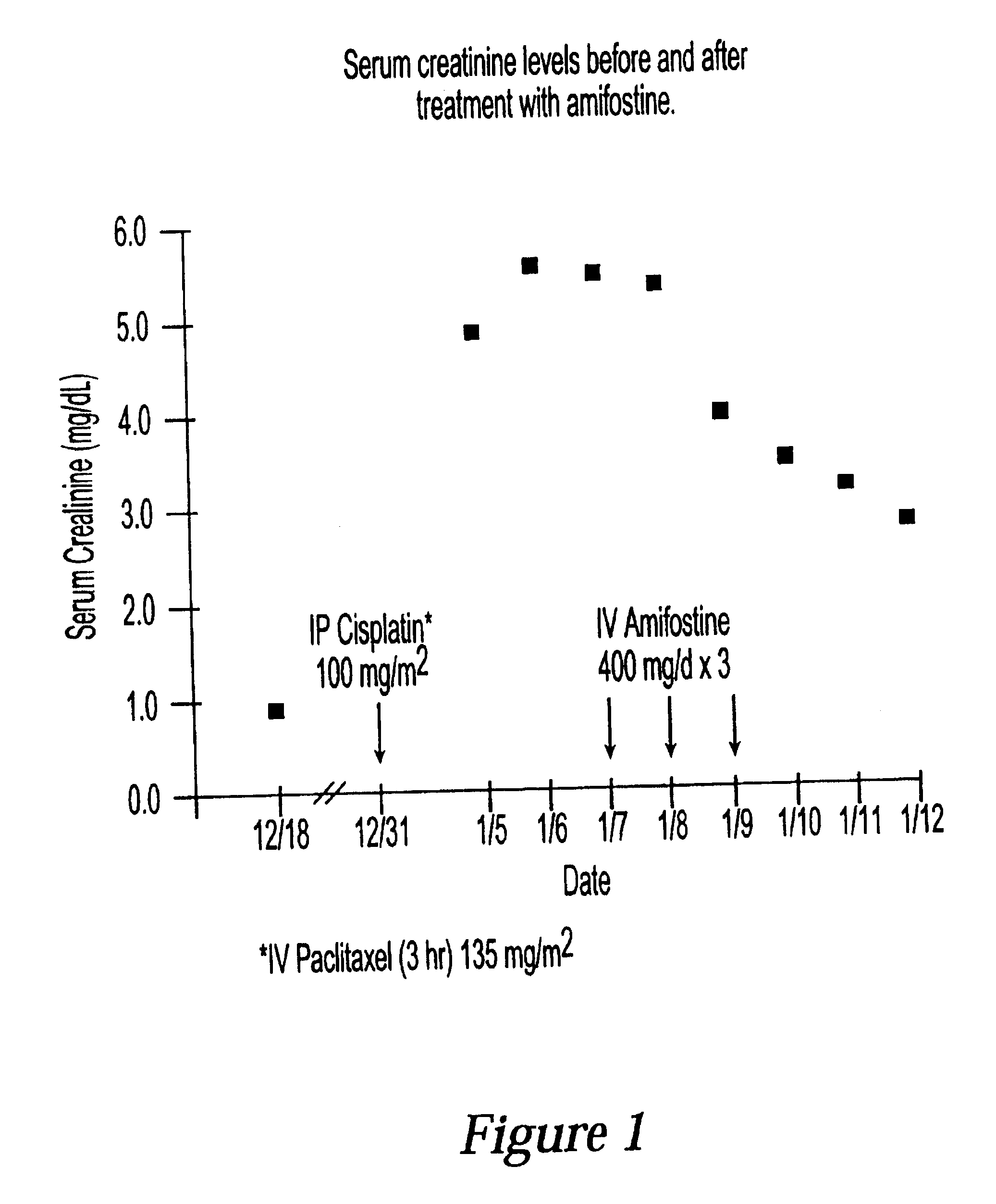Methods for the treatment of nephro-disorders using aminothiol compounds
a technology of aminothiol and nephrodisorder, which is applied in the direction of phosphorous compound active ingredients, antibacterial agents, peptide/protein ingredients, etc., can solve the problems of serious disability, nephrotoxicity of amifostine given 30 minutes after cisplatin, and no protection of mice at all from nephrotoxicity
- Summary
- Abstract
- Description
- Claims
- Application Information
AI Technical Summary
Benefits of technology
Problems solved by technology
Method used
Image
Examples
working examples
6. WORKING EXAMPLES
6.1. Example 1
case study
A 61-year-old patient with new onset cisplatin-induced renal failure that was identified 6 days post-cisplatin therapy was treated with amifostine 400 mg intravenously for 3 days, with partial recovery of her renal function and improvement in her overall clinical status.
The patient was referred by her primary care physician for a gynecologic evaluation for complaints of increasing pain in her lower abdomen with costovertebral angle tenderness over a 10-month period. Ovarian cysts were identified and monitored by ultrasound on several occasions during that time. The patient had a history of recurrent urinary tract infections, and she had a stent placed for approximately two weeks prior to the gynecologic consult. A CAT scan at that time revealed ureteral stenosis and slight hydronephrosis of her right kidney. Other relevant past medical history included congenital absence of her left kidney, double uteri, and a total abdominal hysterectomy and left salpingo-oophorectomy approximately...
example 2
6.2. Example 2
Case Study
The patient, a 75-year-old white male, who is a survivor of the concentration camps of World War II, was diagnosed with bladder cancer that had metastized to the lungs. He received 3 cycles carboplatinum, vinblastine and methotrexate. While in the concentration camp, the patient suffered damage to his lower legs which caused him constant pain. This pain was made worse by chemotherapy. The tumors were shrinking in his lungs, but he developed severe neurotoxicities of his right arm and refused further treatment. These neurotoxicities seemed to worsen after chemotherapy was stopped. He was given demerol for acute relief and required 2-100 mcg / hr. Duragesic Patches in order to make his pain "bearable." The patient was tried on many other agents and combination of agents including steroids and non-steroidals. Soon the Duragesic patches were no longer making his pain bearable, and he was very depressed, and complaining of sleepiness.
After premedication with antieme...
PUM
| Property | Measurement | Unit |
|---|---|---|
| frequency | aaaaa | aaaaa |
| concentration | aaaaa | aaaaa |
| nephro-disorder | aaaaa | aaaaa |
Abstract
Description
Claims
Application Information
 Login to View More
Login to View More - R&D
- Intellectual Property
- Life Sciences
- Materials
- Tech Scout
- Unparalleled Data Quality
- Higher Quality Content
- 60% Fewer Hallucinations
Browse by: Latest US Patents, China's latest patents, Technical Efficacy Thesaurus, Application Domain, Technology Topic, Popular Technical Reports.
© 2025 PatSnap. All rights reserved.Legal|Privacy policy|Modern Slavery Act Transparency Statement|Sitemap|About US| Contact US: help@patsnap.com

